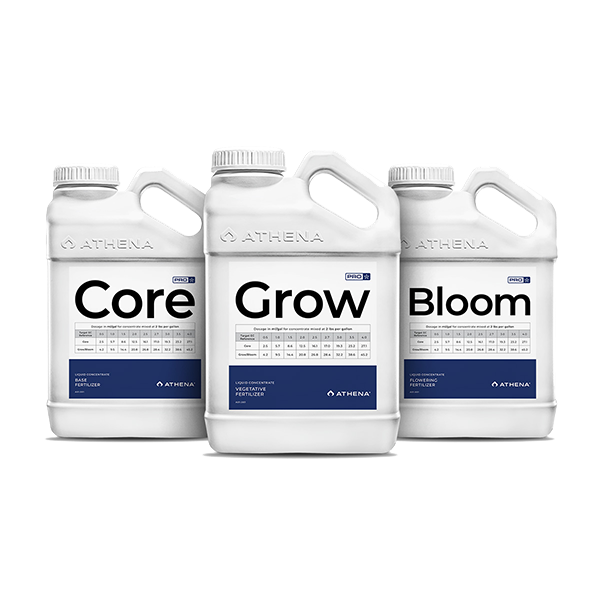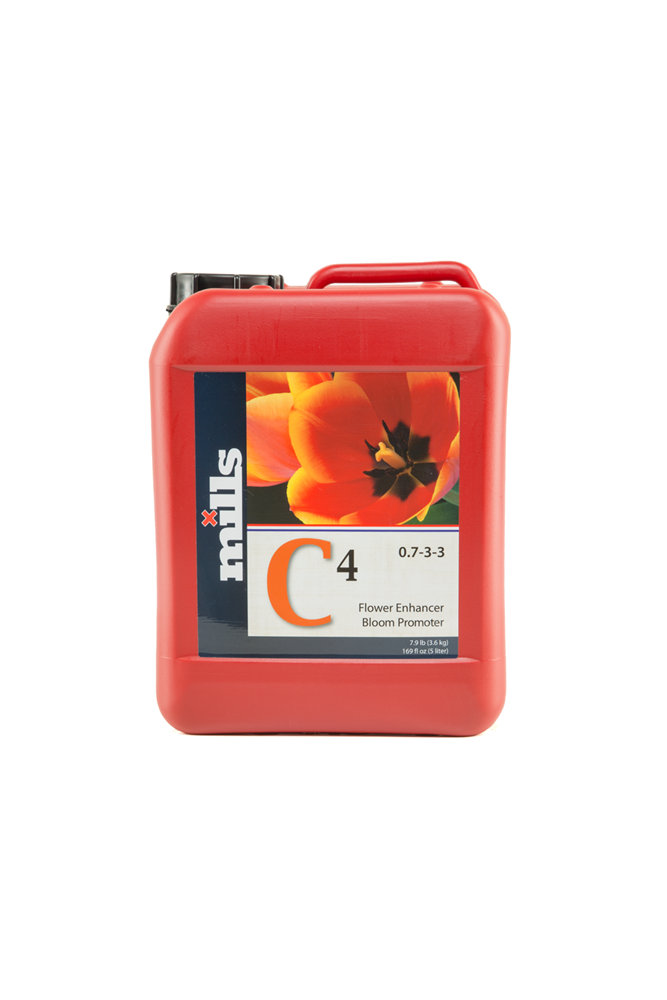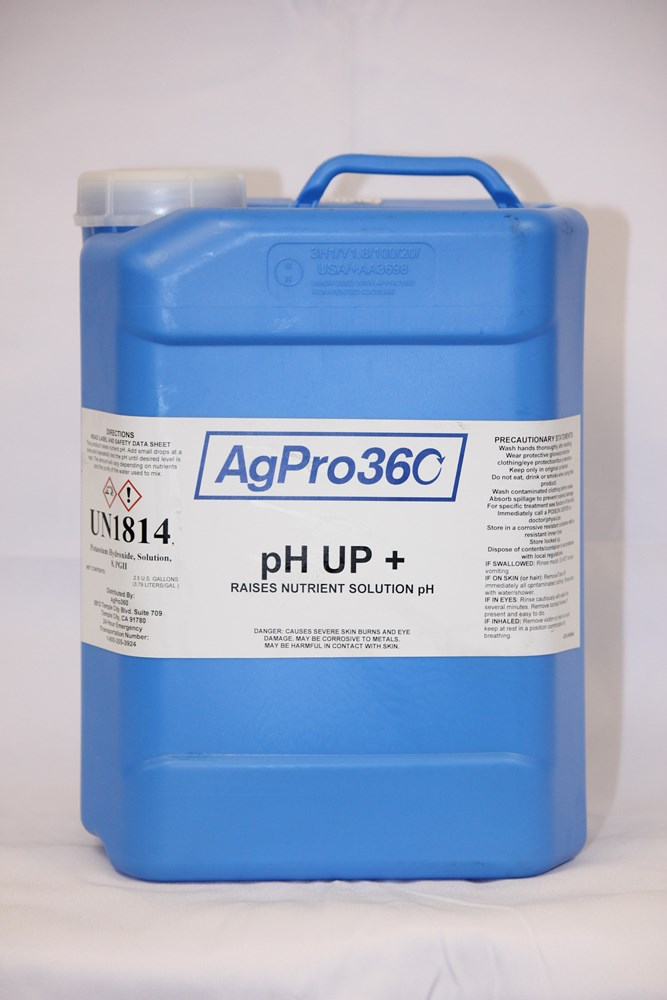Planning to place a pickup order? Please call ahead to check inventory and complete payment in person.

In the quest for maximum yield and potency, every cannabis cultivator knows the significance of factors like nutrient solutions, climate control, genetics, and proper harvesting techniques. But how exactly do these elements intertwine? How can a grower utilize them for the best results? Let’s journey together into the world of high-yield cannabis cultivation, where we’ll explore these components in depth, with a special focus on the advantages presented by Athena’s product range.
Key Takeaways
- Optimizing nutrient solutions and adapting to different growth stages are crucial for high yield cannabis, including transitioning to a flowering-stage nutrient solution and carefully managing nutrient concentration to prevent issues like yellowing leaves or nutrient burn.
- Athena’s product ranges, including the Pro Line, Blended Line, and Home Grower Line, offer tailored solutions that improve soil composition, regulate pH levels, enhance nutrient absorption, and increase yield through meticulously formulated fertilizers and additives.
- Harvest timing and post-harvest processing are pivotal for peak potency, involving careful observation of plant maturity indicators, adherence to ideal drying and curing conditions, and avoidance of both premature and delayed harvesting to maintain quality and maximize effects.
Optimizing Nutrient Solutions for High Yield Cannabis

Healthy plant growth is a symphony of processes, orchestrated by the precise delivery of nutrients. The nutrients a cannabis plant receives act as its building blocks, fueling its growth, bolstering its health, and ultimately, determining its yield. But what happens when things don’t go as planned? The yellowing of leaves, for instance, is a tell-tale sign of a potential need for additional nutrients. Fortunately, this issue can be resolved by adjusting the nutrient concentration in irrigation water, but this needs to be done cautiously.
Here’s how to address the issue:
- Start by adjusting the nutrient concentration to half of the amount specified on the nutrient package.
- Monitor the plant’s response. If the yellowing persists, gradually increase the nutrient concentration to 3/4 of the recommended amount.
- Continue monitoring the plant’s progress and make further adjustments if necessary.
Remember, overdoing it could lead to nutrient burn, so it’s important to start with a conservative approach and observe the plant’s reaction before making any drastic changes.
As the plant matures, its nutritional needs change. The switch from the growth to the flowering stage is a pivotal point in the plant’s life cycle and involves a switch in nutrient solutions. This transition should occur once the plant enters the flowering stage, a practice common among California cannabis growers. But what are the essential nutrients for cannabis growth, and how does the soil structure affect their delivery? It’s time to examine this in more detail.
Essential Nutrients for Cannabis Growth
Cannabis, just like any other plant, requires a variety of nutrients for optimal growth. Among the key nutrients are:
- Nitrogen
- Phosphorus
- Potassium
- Calcium
- Iron
- Zinc
- Magnesium
- Copper
- Boron
- Manganese
- Molybdenum
- Cobalt
- Chlorine
Each of these micronutrients plays a vital role in the plant’s development.
Take Nitrogen, for example, it’s indispensable for photosynthesis and various critical chemical reactions within the plant. Phosphorus plays an integral role in biochemical processes, including the synthesis of proteins and carbohydrates, and Potassium assists in maintaining plant rigidity and nutrient transport. The delivery of these nutrients, however, heavily depends on the soil structure and the presence of organic matter.
Organic Matter and Soil Structure
In the world of cannabis cultivation, the soil is more than just a medium for anchoring roots; it’s a reservoir of nutrients. Organic matter plays a significant role in maintaining soil fertility, promoting long-term sustainability, improving soil texture, and enhancing nutrient availability. This is where beneficial bacteria and fungi come into play. They break down organic matter, convert it into usable nutrients, and contribute to the enhancement of soil structure and water retention.
The structure of the soil directly influences the growth and yield of cannabis plants. It facilitates adequate water drainage, root development, and nutrient absorption. To enhance soil structure, cultivators can incorporate organic matter like compost, which binds soil particles together, improving its structure and fertility.
Having established the importance of proper nutrient solutions, we can now delve into how Athena’s product ranges can enhance cannabis cultivation.
The Athena Advantage: Product Ranges and Benefits

Athena’s product ranges offer a complete solution for cannabis growers. They consist of three lines specifically designed for different types of growers: the Pro Line, the Blended Line, and the Home Grower Line. These lines offer a multitude of benefits, from enhancing the quality of the end product and providing economic benefits for cultivators, to optimizing soil composition, regulating pH levels, and improving nutrient absorption. These factors ultimately lead to increased yields and healthier plants.
One of the key contributors to these benefits is the Athena Pro Line. It contains ingredients such as potassium phosphate, potassium sulphate, and magnesium sulphate, which play a crucial role in optimizing soil structure, balancing pH levels, promoting root health, and improving nutrient absorption, all leading to maximized yield and enhanced flowering. But how do these products function in reality? Let’s explore each product line further for a comprehensive understanding.
Athena Pro Line
The Athena Pro Line is a range of highly water-soluble solid fertilizers specifically crafted for professional growers. These fertilizers are formulated to supply all essential nutrients required for the growth and flowering stages of cannabis plants. Each product in this line is packed with vital macro and microelements like calcium nitrate, iron EDTA, and sulfur, which are fundamental for plant growth. These components facilitate the movement and absorption of nutrients, resulting in enhanced yield and potency.
To achieve the best results, using these fertilizers appropriately is of paramount importance. It is recommended to mix Pro Grow or Pro Bloom with Athena Core in water, taking care not to combine the dry fertilizers directly to prevent any imbalances or chemical reactions. Accurate dosing is also essential and should be quantified in grams per 10 litres of water. This ensures accurate nutrient delivery and the health of your cannabis plants.
Athena Blended Line
The Athena Blended Line is another powerful tool in the arsenal of a cannabis grower. This line includes products like Athena Grow A+B and Athena Bloom A+B as base fertilizers, along with a PK supplement, a kelp-based stimulator, a calcium and magnesium supplement, a substrate cleaner, and a pH balancer. These products offer a multitude of advantages, including a soluble powder pH stabilizer for accurate pH adjustment, suitability for advanced cultivation techniques, and a balanced N-P-K ratio that promotes robust plant growth.
What distinguishes the Athena Blended Line from other nutrient lines?
- Consistent performance throughout the entire crop cycle
- Affordability
- The ability to achieve results comparable to well-known nutrient lines like Floraflex
These qualities make the Athena Blended Line a valuable option for cannabis cultivation.
Each product in this line is packed with essential components that facilitate the flowering phase of cannabis, such as Potassium Phosphate, Potassium Sulfate, Magnesium Sulfate, and Iron DTPA.
Athena Home Grower Line
For hobbyists and small-scale growers, Athena offers the Home Grower Line. This line provides the essential elements required for optimal growth and development, leading to improved yields and healthier plants. Athena understands the unique needs of home growers and tailors the nutrient schedules accordingly.
For instance, Athena Home Grower Line nutrients should be applied to cannabis plants throughout the flowering period, which is usually around 9 weeks, according to the nutrient schedule provided by Athena.
Implementing Athena Nutrient Schedules for Maximum Yield

Achieving maximum yield goes beyond just providing nutrients; it also involves carefully implementing Athena’s nutrient schedules. These schedules detail the different life stages of plants and indicate the quantity of each product to be combined with irrigation water at each stage. They also outline the ideal ranges of EC and pH for each stage, providing a comprehensive guide for growers.
Designed for use with soft or reverse osmosis water, Athena’s nutrient schedules aim to achieve an initial EC in the water of no more than 0.4. Once the desired EC is achieved, the pH level of the nutrient solution should be adjusted to the optimal range. But how is this accomplished? Let’s investigate the specifics.
Measuring and Adjusting Nutrient Doses
The success of your cannabis cultivation largely depends on the accurate dosing of nutrients. Athena’s nutrient schedules provide a detailed guide to achieve this. They cover a flowering period of 9 weeks suitable for most cannabis varieties and use a feed chart detailing the precise combination of nutrients required. However, it’s not just about following the schedule; the quality of water used also matters. The concentration of minerals and presence of impurities can significantly affect the absorption of nutrients in cannabis plants. Hence, the use of high-quality, well-oxygenated, and properly disinfected irrigation water becomes imperative.
Adjusting nutrient doses based on the initial EC requires a precise approach. Here are the steps to follow:
- Measure the EC using a PPM or EC meter.
- Once accurate readings are obtained, adjust the pH of the nutrient solution according to the plant’s growth stage and nutrient solution EC.
- Utilize a pH down supplement such as nitric or phosphoric acid if required.
Monitoring and Maintaining pH Levels
pH levels play a significant role in nutrient absorption, making them crucial for healthy cannabis growth. The ideal pH levels for cannabis in soil range between 6.0 and 7.0. Incorrect pH can have a significant impact on cannabis growth and nutrient uptake. High pH can result in symptoms such as interveinal leaf chlorosis, tip death of new leaves, while low pH can lead to leaf discoloration and reduced growth.
Fortunately, assessing pH in a cannabis indoor grow system is straightforward. You can use specialized pH tester drops or a digital pH pen. pH measuring kits containing a test tube, testing solution, and color-coded pH chart provide a reliable method. Alternatively, you could obtain a soil sample, mix it with water, and use a pH meter to gauge the pH.
Climate Control and Lighting Techniques for Indoor Cannabis Cultivation

Beyond the soil and nutrients, mastering the art of indoor cannabis cultivation requires a keen understanding of climate control and lighting techniques. The optimal temperature range for indoor cannabis cultivation is between 68-85°F (20-29°C) during the day and 55-70°F (12-21°C) at night. Alongside temperature, lighting plays a key role in optimizing yields in cannabis cultivation. LED lighting is particularly recommended due to its energy efficiency and effectiveness in promoting plant growth.
As the plants transition from the vegetative to the flowering stage, a switch in the lighting schedule is also required. During the flowering stage, it is recommended to adjust the lighting schedule to 12 hours on and 12 hours off. This helps to promote optimal growth and flowering. However, the nuances of climate control go beyond just temperature and lighting. We should delve deeper into these aspects.
Mastering Temperature and Humidity
Temperature and humidity control are vital in any indoor cannabis growing environment. The recommended temperature range for flowering cannabis plants is between 65 and 80° F (18 and 26° C), and the relative humidity should be maintained between 40 and 50% during the initial flowering stage, and between 40 and 45% during the later weeks.
What are the consequences if these conditions aren’t fulfilled? Here are some examples:
- Elevated temperatures exceeding 30°C can have a detrimental impact on photosynthesis and growth.
- Temperatures surpassing 80-90°F during the flowering stage can impede bud growth and reduce their aroma and potency.
- On the other hand, low temperatures can also have a significant adverse effect, particularly during the initial growth phases.
Similarly, elevated humidity levels can result in mold, bud rot, and heightened disease vulnerabilities, underscoring the importance of maintaining optimal levels for superior bud quality.
Choosing the Right Lighting Solution
Lighting is another crucial component in indoor cannabis cultivation. LED lighting and full-spectrum options offer a multitude of advantages for cannabis cultivation, notably influencing growth and yield. Specifically, LED lights tailored to the cannabis spectrum can enhance terpene content and bud potency. Meanwhile, full-spectrum lights promote enhanced plant growth, energy efficiency, and deliver the necessary light spectrum for various growth stages, ultimately leading to increased yields.
The recommended light intensity for cannabis growth during the flowering stage is between 800 to 1500 µmol/m2/s PPFD. This range is essential for providing the plants with sufficient energy for robust growth and high-quality bud development. Choosing the suitable lighting system for each stage of cannabis growth is of utmost importance as each stage has distinct light requirements. LEDs are generally the most suitable option for all cannabis growth stages because of their capability to offer appropriate light spectra, which promotes strong plant development throughout the entire cycle.
Genetics and Seed Selection for High Yield Cannabis

While nutrients, soil, temperature, and lighting are all critical, the foundation for high yield cannabis lies in the genetics and seed selection. Genetics plays a significant role in determining the growth and potency of cannabis buds, as it can result in the production of more robust plants, larger flower buds, and higher cannabinoid content. However, growers often make the mistake of selecting low-priced seeds, which may possess subpar genetics leading to diminished yields.
Choosing the right strain is also essential. Some cannabis strains known for high yield are:
- Gorilla Zkittlez
- Pineapple Express Auto
- Pineapple Chunk
- Blue Gelato 41
- LSD
- Purple Punch Auto
- Tropicanna Banana
- Dos Si Dos 33
How can one identify superior cannabis seeds? Let’s examine that in the following section.
Identifying Quality Features in Cannabis Seeds
The selection of high-quality cannabis seeds is paramount to achieving a successful yield. Mature cannabis seeds are typically larger and may have a tear-shaped appearance, while immature seeds are generally smaller and white or green in color. The color and feel of a cannabis seed can also indicate its quality. High-quality seeds may display light or dark grey, very dark (or almost black), or a darker shell, which suggests maturity and a higher probability of successful germination.
However, growers must be cautious when purchasing seeds. The acquisition of inexpensive cannabis seeds may pose potential hazards such as:
- fraudulent activities
- seeds with subpar genetic performance
- uncertainty surrounding their quality
- the possibility of contaminants that could be damaging to both the crop and consumers
Thus, it’s crucial to source seeds from reputable seed banks and avoid low-priced seeds with poor genetics.
Harvest Timing and Techniques for Peak Potency
The culmination of the cannabis cultivation process lies in the harvest. The timing and techniques of this stage significantly impact the potency of the buds. The maturity of cannabis plants can be identified by closely examining the trichomes using a microscope or jeweler’s loupe. Signs of maturity include:
- Yellowing leaves
- Orange pistils
- Plump calyxes
- A trichome composition where approximately 90% are milky white and 10% have turned amber
For achieving the highest THC content, it is advisable to wait until 60-70% of the hairs darken, as this aligns with the ideal ratio of milky and amber trichomes.
Identifying the optimal harvest time is just the beginning. Techniques used in post-harvest processing and curing are equally vital in maintaining and improving the quality of the harvested buds, ensuring the best results for your crops.
Signs of Maturity and Readiness
Determining the right time to harvest your cannabis plants can be a game-changer in terms of potency and yield. Indicators of maturity in a cannabis plant include the older leaves turning yellow, darkened and curled pistils, yellowing of large leaves, brown hairs on the buds, and milky white trichomes. To ascertain the readiness of a cannabis plant for harvest, it is advisable to closely inspect the trichomes for a milky white appearance using a microscope or jeweler’s loupe, and to observe the change in color of most pistils.
Nevertheless, growers should be careful to avoid premature or delayed harvesting of their plants. Harvesting cannabis plants prematurely may lead to premature buds with a reduced yield and inferior product quality, whereas harvesting them belatedly can result in a more narcotic high and less energizing effects. The timing of harvest for cannabis plants is influenced by:
- strain-specific growth patterns
- maturation rates
- plant growth stages
- day length
- season
- color and maturity of the plant
- soil conditions
Post-Harvest Processing and Curing
Once harvested, the cannabis buds undergo post-harvest processing and curing. The drying process involves cutting the branches into smaller sections, eliminating unwanted leaves, and suspending them to facilitate air circulation. The drying period typically spans 2-7 days, though it may extend to three to four weeks based on the particular mass and profile of the flowers.
The curing process follows drying and involves:
- Storing the buds in a dark, well-ventilated room with a temperature of approximately 60-70°F (15-21°C) and a humidity level of 45-55% for a period of 7-10 days.
- During the curing phase, maintaining a temperature of 70°F (21°C) and a humidity level of 60-65% is ideal for optimal results.
- This curing process should ideally span four to eight weeks, although certain strains may benefit from a longer duration, possibly up to six months or more.
The buds should be stored in appropriate receptacles such as:
- Giant Mylar trash bags with an oxygen absorber inside
- Airtight light-tight boxes
- Half-gallon jars
- Cannascape® Classic Matte Black Stash Jar
- Stori Smart Storage Container
- Curing jars
Summary
In conclusion, achieving high yields in cannabis cultivation involves a harmonious interplay of various factors: the right nutrient solutions, effective climate control, proper lighting, good genetics, and careful harvesting techniques. By utilizing Athena’s product ranges, optimizing nutrient delivery, maintaining ideal temperature and humidity levels, choosing the right lighting solution, selecting seeds with excellent genetics, and implementing proper harvesting techniques, growers can maximize their cannabis yields and potency. Remember, every step in the cultivation process is significant, and each decision you make could be the difference between an average yield and a remarkably high one.
Frequently Asked Questions
How often should you feed Athena nutrients?
Athena Nutrients should be fed twice a week for regular maintenance and prevention, and three times a week when combating a pest infestation.
What are the best cannabis nutrients for 2023?
The top contenders for the best cannabis nutrients in 2023 are brands like Athena, Mills, and AgPro360. These brands offer comprehensive nutrient solutions for cannabis cultivation, ensuring optimal growth and yield.
What nutrients from Athena, Mills, and AgPro360 help in producing big buds?
To promote big buds, use Athena Pro Line or Mills Basis A&B for ample nitrogen to promote green growth. Switch to Athena Bloom or Mills Ultimate PK during flowering for optimal budding. AgPro360's Bloom Booster is also a great choice for enhancing bud growth.
How do you use Athena fertilizer?
To use Athena fertilizer, add the appropriate amount of powder to water, stir, and ensure no particles are left at the bottom or residues in the tank or feed lines. Shake well before use, maintain equal parts of Athena Grow A & B, monitor EC regularly, and adjust pH to proper levels after mixing all fertilizers and additives.
